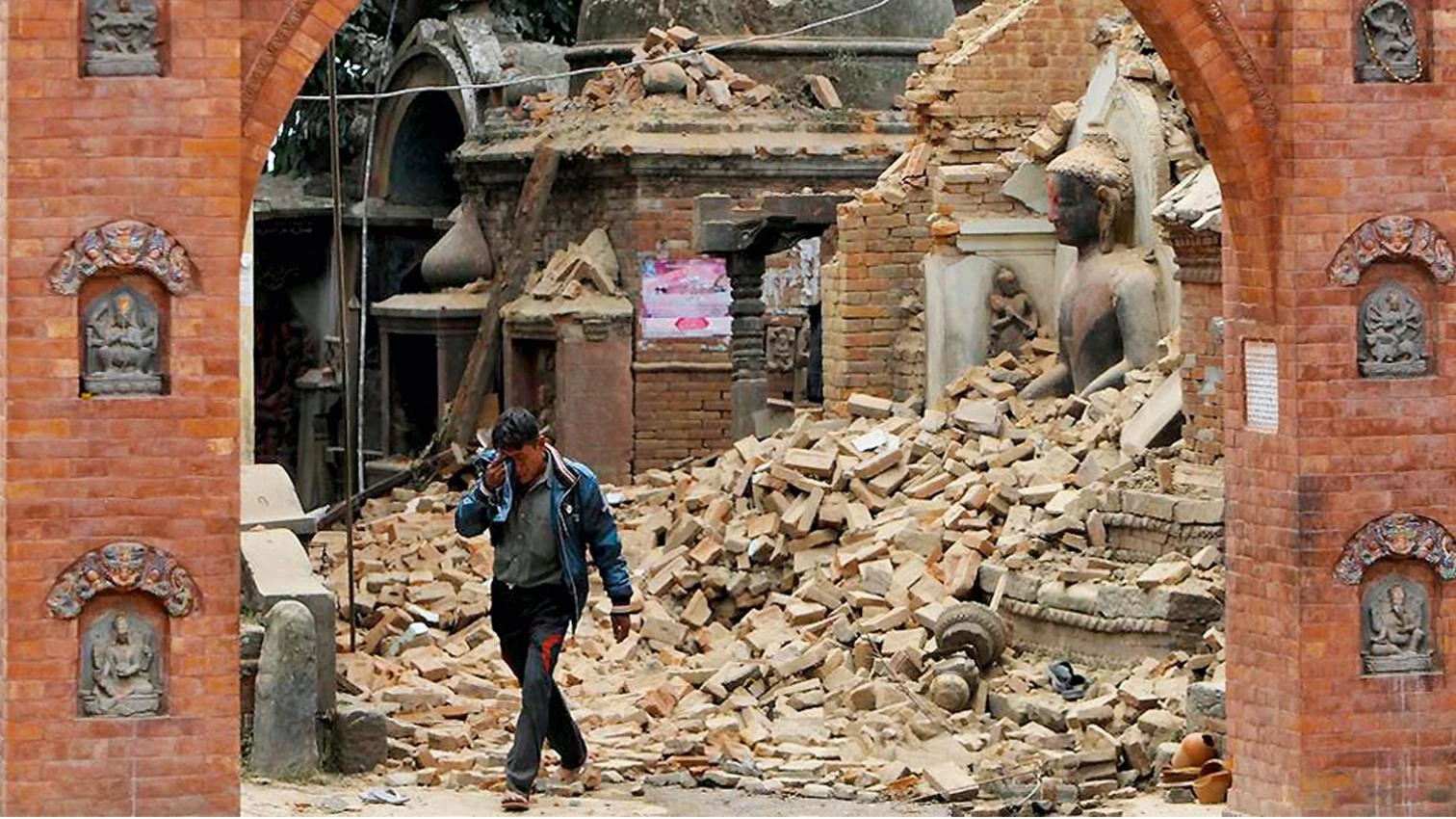
The earthquake that struck Nepal at 11:56 on the morning of 25 April, marking 7.8 on the Richter scale, killed over 7,000 people, injured over 16,000, and left about 450,000 homeless. This human tragedy is also economic (it is estimated that reconstruction could well cost more than 20% of the country’s gross domestic product), and cultural, as the Gorkha earthquake, as it is also known because of the location of its epicenter, has seriously affected three Unesco World Heritage Sites. Counting among the country’s major tourist attractions, all three are located in the Kathmandu Valley, a crossroads of civilizations, religions, and languages which Hindus and Buddhists alike hold to be sacred. Particularly hit was the enclave most admired and visited by tourists, Kathmandu Durbar Square, with the pagodas and palaces that were occupied by Nepal’s monarchy since the Middle Ages, besides Tantric carvings and temples of immeasurable value, such as Kasthamandap, built with wood from a single tree and giving its name to the city, or Krishna Temple, besides the Dharahara tower, raised in 1832, which like many other Nepalese monuments was rebuilt after the earthquake of 1934. Also much damaged is the Buddhist temple of Changu Narayan, dating back to the 9th century, and the extraordinary complex of Bhaktapur Square, with its precious temples. It is hard to say if these buildings can at all ever be reconstructed, but there is no doubt that the recent earthquake has left an enormous void in the imagery of a country defined like no other by its rites and its architecture.





